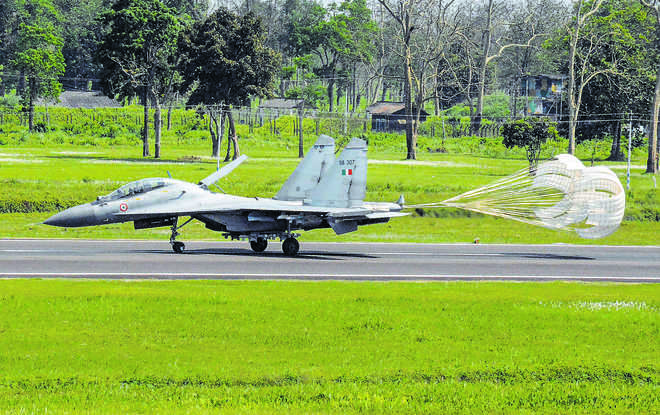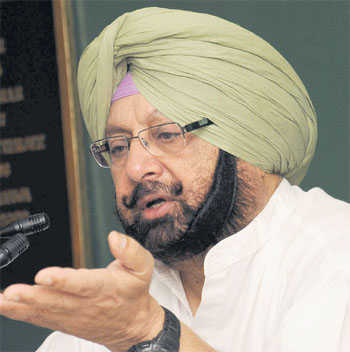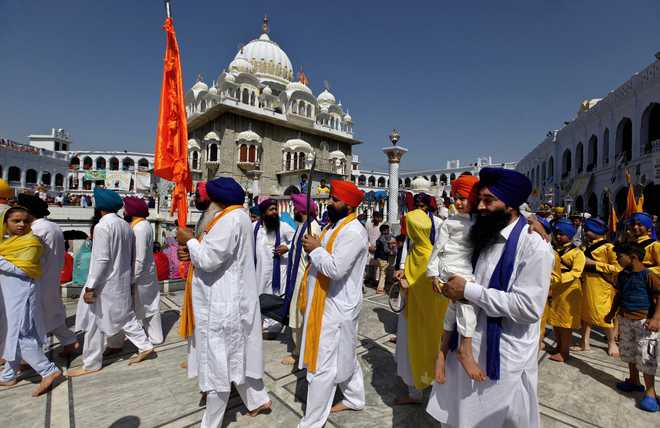The PMO should consider taking defence-preparedness directly under its wings, like the space and nuclear domains, to prevent a tech asymmetrical surprise in a future war.

Air Vice-Marshal Manmohan Bahadur VM (retd)
Distinguished Fellow, Centre for Air Power Studies, New DelhiTwo recent events have been discussed for their implications on the security posture of the nation. First, the establishment of the Defence Planning Committee (DPC) and second, the hosting of Exercise Gagan Shakti by the IAF. While the former is perched at the strategic level and will see its efforts beginning to bear fruit only a decade from now, the latter is about testing the preparation of the Air Force to fight a war in the immediate future. The DPC would be about spelling out doctrines, strategies, capability development, defence diplomacy and streamlining defence-manufacturing and acquisitions. Gagan Shakti, on the other hand, is about testing the operational and tactical capability of the IAF to prosecute war. However, lost in the media hype is an insidious reality creeping in — a fast-developing technological asymmetry between the armed forces of India and China, which if not addressed head on would be detrimental to India’s deterrence posture.Deterrence projected by a force is a function of the lethality of its equipment, training of its personnel and the stamina of its logistics chain. In turn, these are a function of their technological relevance when the balloon goes up. Thus, down the ages, the sword was overtaken by the lance, which was no match for the bow and arrow – and they all were made to look silly when the musket, rifle and mortar came on the scene. So, while the Indian Army is firmly entrenched on the mountainous northern border and the Navy expanding its blue water capabilities, it is the IAF that is the primary instrument of deterrence against China. The IAF, at present, is well placed vis-a-vis the Peoples’ Liberation Army Air Force (PLAAF) in almost all aspects of aerial warfare. There is a string of airfields along our northern border (all at low altitudes and hence not affecting weapon carrying capability of aircraft), the air defence network has been strengthened with new radars and surface-to-air missiles and its frontline Su-30 MKI fighters are better in all aspects than any aircraft that PLAAF can throw in. The C-17, IL-76 and An-32 transport aircraft afford an airlift capability much better than PLAAF’s while Mi-17 helicopters, supported by ALH Dhruv, match its heli-lift potential. Crowning this positive equipment asymmetry is the qualitatively better combat-readiness state of IAF aircrew who are trained in modern war fighting techniques unlike PLAAF’s rigid Russian legacy training profiles. This, however, is set to change as PLAAF goes about feverishly modernising its equipment and training profiles.The J-20 stealth fighter and Y-20 very heavy transport aircraft have started entering PLAAF and so have upgraded fourth-gen fighters like J-11, J-16 and J-10C. Feverish R&D is ongoing to master aero-engine technology by the amalgamation of numerous engine R&D centres into a single entity. In the next five-odd years, Chinese engineers would have turned the corner – dependence on Russia for engines would then end. With indigenous engines, the J-20 would become a true fifth-gen fighter and the Y-20’s payload would augment from the present 50 to 66 tonnes, bringing it on a par with India’s C-17. The Y-20, besides ramping up airlift capacity, would then be used as the base for indigenous AWACS and Flight Refuelling Aircraft, which are PLAAF’s Achilles’ heel at present.A long-range strategic bomber is on the design table and would be flying in a decade as would a hypersonic glide vehicle, whose prototype is already in existence. With extensive radar development and deployment, missile forces being coalesced into a single rocket force command, space assets being deployed in increasing numbers and net centricity in place, PLAAF may nullify IAF’s present edge. This could be accentuated by the drawdown of IAF fighter squadrons as MIG-21/27 fleets retire, low replenishment due the tortoise like production rate of Tejas by HAL and the meandering acquisition programmes of additional fighter aircraft and force multipliers like AWACS, FRA and armed UAVs. Immediate steps are necessary to prevent this alarming reversal, which is true for the other two Services too; could DPC be that catalyst?The DPC can succeed in its mission only if it follows in the footsteps of the atomic energy and space programmes — two success stories in the strategic domain, mainly because the Prime Minister’s Office (PMO) is directly involved and orders from these platforms are implicitly implemented by all ministries. As is known, though the foreign and finance ministries would be integral to it, the DPC would report to the Defence Minister who would forward recommendations to the Cabinet Committee on Security for consideration. This does not bode well for the very laudable spirit of making the DPC an instrument to expedite matters defence. True, that decisions and actions would be faster since the DPC head would be the National Security Adviser, but the speed with which tech asymmetry is developing against the Indian armed forces would become too skewed to play catch-up. India has tried the ‘committeeisation’ route, to use Chinese terminology, for the past seven decades and failed — and the DPC is but another committee. Time, tide and technology wait for no man and the PMO should consider taking defence preparedness directly under its wings, like the space and nuclear domains, to prevent a tech asymmetrical surprise in a future war.

























































 HT FILE
HT FILE


























































